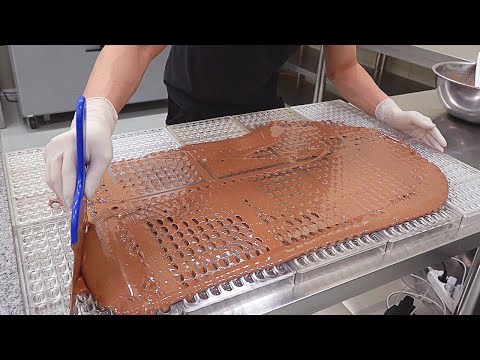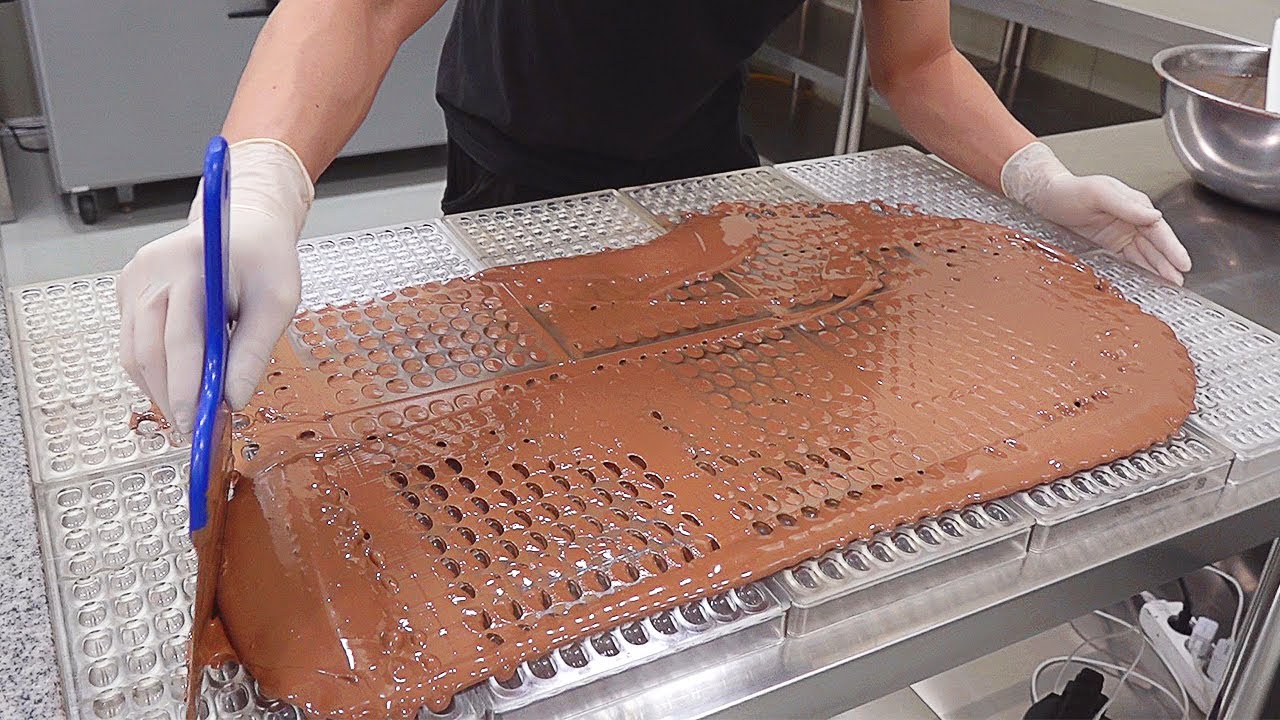Indulge in the tantalizing world of chocolate fabric where dreams meld with reality, and luxury intertwines with comfort. Immerse yourself in the velvety softness of this divine creation, crafted to ignite your senses and awaken your innermost desires. With its irresistible allure, the chocolate fabric captivates your attention, drawing you in to experience a sensory journey like no other. As you run your fingers along its sumptuous surface, you can almost taste the rich, velvety cocoa melting on your tongue. The chocolate fabric envelops you in its warmth, creating a cocoon of pure bliss as you sink into its plush embrace. Whether adorning your living space or enhancing your wardrobe, this decadent fabric adds an element of sophistication and elegance to any setting. Its exquisite craftsmanship and attention to detail are evident in every stitch, creating a masterpiece that reflects the true artistry of chocolate. Immerse yourself in the divine world of chocolate fabric and let it transport you to a realm of pure indulgence and luxury.

2023 Trending Chocolate Fabric
| Fabric Type | Description | Features | Usage |
|---|---|---|---|
| Cocoa Velvet | A luxurious fabric with a sumptuous feel, cocoa velvet is made from high-quality cocoa fibers. Its deep brown color resembles the rich hues of dark chocolate, exuding an air of opulence. | – Soft and smooth texture – Excellent drapability – Resistant to wrinkles and creases – High durability |
Perfect for creating elegant evening gowns, upscale home decor, and refined upholstery. |
| Dark Truffle Silk | Dark truffle silk is a lustrous fabric that mirrors the silky smoothness of dark chocolate. Derived from the finest silk fibers, it offers a sophisticated and timeless appeal. | – Natural sheen and luxurious feel – Lightweight and breathable – Wrinkle-resistant – Hypoallergenic properties |
Preferred choice for exquisite formal wear, elegant drapery, and high-end bedding. |
| Milk Chocolate Linen | Milk chocolate linen fabric combines the earthiness of linen with the warm tones of milk chocolate. This fabric is known for its rustic yet refined appearance, adding a touch of natural elegance to any setting. | – Breathable and moisture-wicking – Strong and durable – Naturally resistant to pilling – Eco-friendly material |
Used in creating casual chic attire, stylish table linens, and comfortable upholstery for both indoor and outdoor spaces. |
| White Chocolate Lace | White chocolate lace fabric is a delicate and intricate material that resembles the intricate designs of lace. Its ivory color brings to mind the creamy tones of white chocolate, making it visually captivating. | – Intricate and elegant patterns – Lightweight and airy – Soft and gentle to the touch – Versatile and easy to manipulate |
Commonly used in designing wedding dresses, feminine lingerie, and delicate home decor accents. |
As we delve into the trends of 2023, chocolate-inspired fabrics have taken the fashion and interior design industries by storm. These sumptuous textiles evoke a sense of indulgence and sophistication, captivating the senses with their rich hues and luxurious textures.
One prominent fabric in this trend is the cocoa velvet, a true embodiment of opulence. Crafted from high-quality cocoa fibers, it boasts a soft and smooth texture alongside excellent drapability. This fabric is resistant to wrinkles and creases, ensuring its pristine appearance even after prolonged use. Ideal for creating elegant evening gowns, upscale home decor, and refined upholstery, cocoa velvet sets the stage for timeless luxury.
Another sought-after fabric is dark truffle silk, which mirrors the silky smoothness of dark chocolate. Derived from the finest silk fibers, it possesses a natural sheen and a luxurious feel. Not only is dark truffle silk lightweight and breathable, but it is also wrinkle-resistant, ensuring a flawless look at all times. This fabric’s hypoallergenic properties make it a perfect choice for exquisite formal wear, elegant drapery, and high-end bedding.
For those seeking a more rustic yet refined aesthetic, milk chocolate linen fabric is the answer. Blending the earthiness of linen with warm tones reminiscent of milk chocolate, this fabric exudes natural elegance. Known for its breathability and moisture-wicking properties, milk chocolate linen remains strong and durable, resisting pilling while being environmentally friendly. It finds great use in creating casual chic attire, stylish table linens, and comfortable indoor and outdoor upholstery.
Lastly, we have the captivating white chocolate lace fabric, boasting delicate and intricate patterns reminiscent of lace. Its ivory color evokes the creamy tones of white chocolate, making it visually enchanting. Lightweight, airy, and gentle to the touch, this fabric offers versatility and ease of manipulation. It finds its niche in designing wedding dresses, feminine lingerie, and delicate home decor accents, adding a touch of elegance to any creation.
In 2023, chocolate-inspired fabrics are at the forefront of fashion and design, embodying luxury, sophistication, and a delectable aesthetic. Whether it’s the lavish cocoa velvet or the delicate white chocolate lace, these textiles redefine elegance and offer a taste of indulgence within our creations.
“The Enchanting Journey of Crafting Exquisite Handmade Chocolates: Unveiling the Secrets of a Korean Chocolate Master”
Exploring the World of Chocolate Fabric
Chocolate fabric, a term that might sound like a dream come true for chocolate lovers, is a fascinating innovation in the textile industry. This fabric has gained popularity in recent years due to its unique properties and uses. In this article, we will delve into the world of chocolate fabric, exploring its origins, manufacturing process, benefits, and potential applications.
The Origins of Chocolate Fabric
Chocolate fabric has its roots in the innovative field of biomimicry, which draws inspiration from nature to create sustainable and eco-friendly materials. The idea of creating fabric that mimics the appearance and texture of chocolate was born out of a desire to develop a bio-based, biodegradable alternative to traditional textiles.
The first experiments with chocolate fabric began in the early 2000s, with researchers exploring various natural materials that could be used to mimic the color and texture of chocolate. After years of experimentation, a breakthrough came with the discovery that cocoa bean shells, a byproduct of chocolate production, could be transformed into a textile-like material.
The Manufacturing Process
The manufacturing process of chocolate fabric involves several steps. First, the cocoa bean shells are collected from chocolate factories, where they are typically discarded as waste. These shells are then thoroughly cleaned and processed to remove any impurities or unwanted elements.
Once cleaned, the cocoa bean shells are ground into a fine powder, which is then mixed with a bio-based polymer. This mixture is carefully blended to ensure uniform distribution of the cocoa bean particles throughout the polymer matrix. The resulting blend is then extruded into long fibers, similar to the process used in traditional textile manufacturing.
The extruded fibers are then spun into yarns, which can be woven or knitted into various fabric structures. The final step involves treating the fabric with colorants and finishing agents to enhance its appearance and performance.
The Benefits of Chocolate Fabric
Chocolate fabric offers several notable benefits that make it an attractive choice for eco-conscious consumers and designers:
1. Sustainability: Chocolate fabric utilizes a byproduct of the chocolate industry that would otherwise go to waste, making it an environmentally friendly alternative to conventional textiles.
2. Biodegradability: Unlike synthetic fabrics, chocolate fabric is biodegradable, meaning it can naturally decompose over time without leaving harmful residues in the environment.
3. Aesthetics: The rich, warm color and texture of chocolate fabric make it visually appealing, and it can add a touch of luxury and uniqueness to fashion and interior design.
4. Comfort: The natural fibers in chocolate fabric provide breathability and moisture-wicking properties, making it a comfortable choice for clothing and bedding.
5. Versatility: Chocolate fabric can be used in a variety of applications, from clothing and accessories to upholstery and home decor, allowing for endless possibilities in design.
Potential Applications
With its unique properties, chocolate fabric has the potential to revolutionize various industries. Here are a few potential applications:
1. Fashion: Chocolate fabric can be used to create luxurious and sustainable clothing, including dresses, suits, and accessories, attracting eco-conscious fashion enthusiasts.
2. Interior Design: The warm and inviting appearance of chocolate fabric makes it an ideal choice for upholstery, curtains, and decorative textiles in homes and hotels.
3. Automotive Industry: The biodegradable nature of chocolate fabric makes it an intriguing option for car interiors, offering a sustainable alternative to synthetic materials.
4. Packaging: Given its biodegradable properties, chocolate fabric could be used as an eco-friendly packaging material, reducing the environmental impact of traditional packaging.
5. Art and Crafts: Crafters and artists can use chocolate fabric to add a unique touch to their creations, whether it’s in textile art, sculpture, or mixed media projects.
In conclusion, chocolate fabric is an innovative and sustainable textile that has emerged from the field of biomimicry. With its unique properties, including sustainability, biodegradability, and versatility, it has the potential to revolutionize various industries, from fashion to interior design and packaging. As we continue to explore biomimetic solutions, chocolate fabric stands as a deliciously enticing option that combines functionality, aesthetics, and sustainability.
Chocolate Fabric
- Soft and velvety texture
- Deep brown color
- Rich and indulgent scent
- Made from cocoa beans
- Used in the production of clothing and accessories
- Can be woven or knitted
- Durable and long-lasting
- Provides warmth and comfort
- Can be blended with other fabrics for added benefits
- Has a luxurious and premium feel

